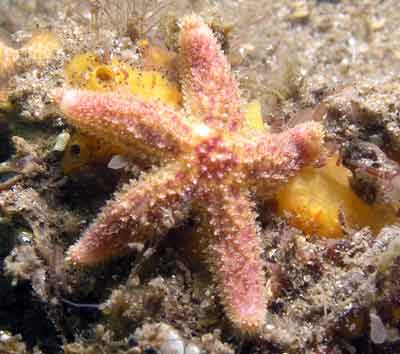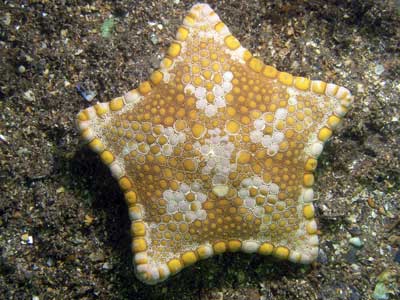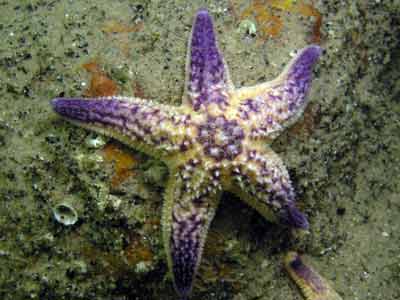|
The main cricket ground for Tasmania is Belerive Oval. It is situated at Belerive which is on the eastern side of the Derwent Estuary, the harbour for the capital city, Hobart. Belerive Oval is right on the beach, and this beach has a fantastic dive site that is quite unique. Handfish! These quite strange and beautiful fish can almost certainly be found at this location, probably the best spot in Australia to find them.
If you are in Hobart, cross the Tasman Bridge and take the exit to Belerive. Follow the signs and once in the main street of Belerive, go to the end and then follow the one way street that is adjacent to the water's edge (Victoria Esplanade). Eventually, you will come to a beach and ahead, you will see the southern stand of the Belerive Oval. Of course, to do this dive, you will need to make sure that there is no cricket on as you will not be able to do this dive if there is as you will have no where to park.
Park in the first angled car park spots you see on your right, this is right next to the dive site. The beach is Belerive Beach and it roughly runs east to west. You are at the western end of the beach. Gear up and walk down to the beach. As this is a very shallow dive, you might need to add a little extra weight.
 |  |
| The first Australian Handfish I found | The second Australian Handfish I found |
Enter the water and swim out a few metres before dropping to the bottom. The depth here is less than two metres. The bottom is composed of a sandy bottom which deeper becomes a little silty. The reef is a mixture of large low rocks and a lot of smaller rocks. There is kelp and weed on the rocks.
 |  |
| The third Australian Handfish I found | One of the many flatheads seen |
Follow the reef edge as this is where the handfish live. As you can see from the attached photographs, the handfish are sort of like anglerfish that we get in Sydney but are skinnier and have an extra pair of hands at the front. The handfish can be found on the sand, sometimes out in the opne, sometimes under the sides of the rocks.
As soon as I entered the water I saw an eagle ray. This took off and I did not even get a chance to get a photo. Within four minutes I found my first handfish. These are Australian handfish. These are also found in southern NSW and Victoria, but as far as I can see are best seen at this site.
As I moved deeper, the visibility which was about five metres dropped a bit here and there. Most of these was from fish stirring up the bottom. The depth gets deeper very slowly, reaching a maximum of about six metres after 25 minutes. I am not sure what it gets to if you keep going.
 |  |
| There were hundreds of these starfish | I saw quite a few of these biscuit stars |
Anyway, as I get deeper I see lots of starfish, all of a type I have never seen before. I also see a biscuit star that is paler and different to any I have seen. There are some banded stingarees, a small ray, on the sand. There are also lots of bastard trumpeters, a few large flathead and other fish.
I turn around after 25 minutes as the water has got quite dirty and visibility has dropped to about two metres. Also, as I am diving solo and Kelly is waiting for me, I think that I had better get back within the 45 minutes as I promised. On the way back the visibility improves.
 |  |
| One of a few Shaws cowfish I saw here | There were a few of these starfish |
As I approach the place where I found the first handfish, I find another smaller one. This fish is very hard to photograph as once I take a shot, it takes off really quickly under my body and I need to find where it went to take another photo. This goes on every time I take a shot.
I continue on and soon find another one. It is similar in size to the first one and I am not sure if it is indeed the same specimen. However, once I looked at the photos, it is not the same fish. Eventually I exit the water, fully satisified with this dive.
A great and extremely easy site that produces some great fish.
| 
 v6.00.307 © 2003-2005
v6.00.307 © 2003-2005